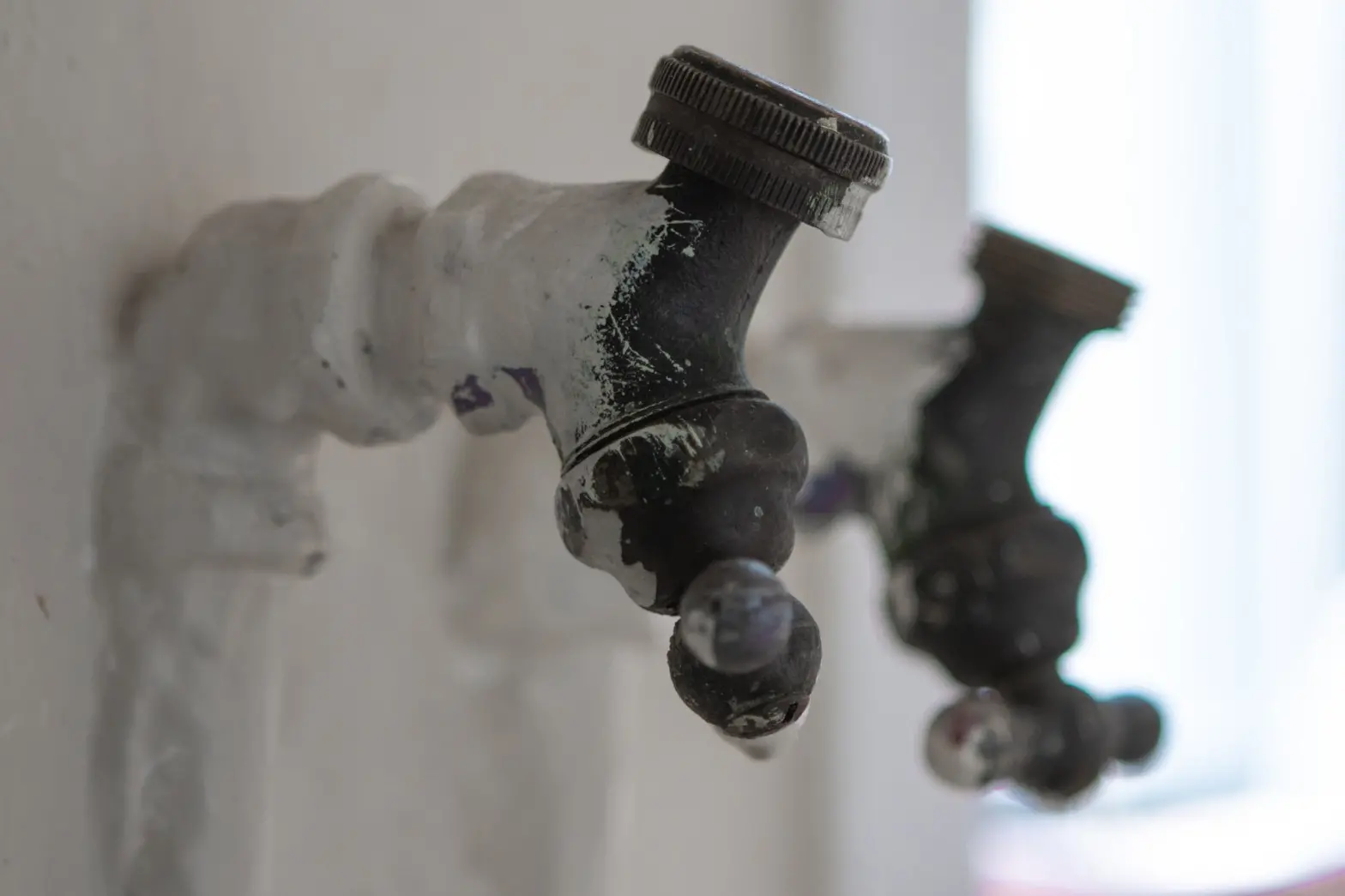
Evanston city staffers are slowly working to replace the 11,471 lead service lines that carry the city’s drinking water, but they say it’s not an urgent matter.
Prior to October 28, blood lead level data in Evanston appeared to be reassuring. According to 2018 data provided by the city’s Health and Human Services Department, only 4% of blood tests administered to Evanston children age 6 and under that year showed results exceeding 5 micrograms per deciliter (µg/dL), which at the time was the blood lead reference value used by the Centers for Disease Control and Prevention.
The Illinois Department of Public Health still utilizes 5 µg/dL as a reference level – but two weeks ago, the CDC lowered its value for children ages 1-5 to 3.5 µg/dL.
As a nonprofit journalism organization, we depend on your support to fund critical stories in local U.S. newsrooms. Donate any amount today to become a Pulitzer Center Champion and receive exclusive benefits!

Of the 1,602 Evanston tests conducted in 2018, 94% of tests showed results above 3.5 µg/dL. Children ages 1 to 5 with these blood lead levels are among the top 2.5% of children with the highest levels of lead in their blood, according to the CDC.
The CDC says its blood lead reference value is not health-based nor a regulatory standard but “a screening tool” that helps communities take action earlier in order to prevent further lead exposure.
Lead is a toxic material that enters the bloodstream when inhaled or ingested. The most severe lead poisoning occurs when a child consumes a lead paint chip or inhales lead dust in an old home, but lead is also found in pipes that carry drinking water.
In Evanston, 78% of all water service lines are made of lead, and an additional 8% are made of copper with lead soldering holding the pipes together, according to the city’s material inventory reports. These pipes carry drinking water from the water main under the street to household plumbing systems, where Evanston homeowners may also find lead.
According to the city’s 2020 water testing results, 36 of the 40 samples taken in homes across Evanston contained a level of lead that exceeded the American Academy of Pediatrics recommended 1 part per billion (ppb) limit for drinking water in schools.
While the amount of lead found in these samples fell well under the city’s action level of 15 ppb, there is no safe level of lead in drinking water and any amount of lead can be harmful, especially for children and infants, according to the CDC.
Safe water and clean water are two different things, said Jeremy Orr, who works as a Staff Attorney for the Natural Resources Defense Council’s (NRDC) Safe Water Initiative. Safe water complies with federal standards, and is thus legally safe to drink. By this definition, Evanston drinking water is safe.
Clean water is free of lead and other contaminants, and is safe from a public health perspective, Orr said. Evanston’s drinking water is not clean due to the traces of lead found in the city’s water sampling data.
“It’s imperative that we get these pipes out of the ground as soon as possible,” Orr said. “We’re one incompetent government decision away from a crisis."
NRDC, a nonprofit that works to protect the planet and ensure equal access to clean water, air and the natural world, is fighting to have lead pipes replaced now, rather than wait for another water crisis, like the ones in Newark, New Jersey; Pittsburgh, Pennsylvania; and Flint, Michigan, Orr added.
The most infamous U.S. water crisis occurred in Flint in 2014 when the city switched its water supply from Detroit water to the Flint River to save money. This new water was not treated or tested properly, and as a result, lead from the city’s service lines leached into the water – doubling, and in some cases tripling, the blood lead levels in children, according to the NRDC.
Lead can affect children’s behavior and their ability to learn and retain information, and it can lead to hyperactivity, serious health issues and behavioral problems, which can increase the likelihood of a child getting involved with law enforcement, said Anita Weinberg, a Law and Social Justice Professor at Loyola University Chicago. Weinberg helped draft and pass the Illinois Lead Poisoning Prevention Act of 2006.
“There are so many different things that we know lead can do to a child,” said Weinberg. “Absolutely we should be addressing it.”
In August 2021, Illinois passed the Lead Service Line Replacement and Notification Act, which requires that, starting in 2022, when the ground is dug up for a water main replacement, lead service lines are also replaced during the process. The act also states that water systems, including Evanston’s, must submit a lead service line replacement plan by 2024, which will be revised annually until a final version must be submitted in 2027.
“That plan will require us to replace all lead services within 33 years, once we start implementing,” said Evanston Public Works Agency Director David Stoneback. The city has until 2027 to finalize this plan, and Evanston may not be free of lead pipes until 2060.
Lead is an equity issue
Low-income communities and communities of color are disproportionately harmed by these pipes. A recent study by the Metropolitan Planning Council shows that in Illinois people of color are twice as likely to live in areas that contain lead pipes. Blood lead levels are also significantly higher in Black children than in white children, according to Harvard University research done in Chicago neighborhoods. These communities shouldn’t have to pay for a problem they didn’t cause and disproportionately suffer from, Orr said.
An investigation by The Daily Northwestern revealed that the city’s routine water tests, taken once every three years, have neglected the historically Black Fifth Ward, where only 1.8% of tests were taken from 1992 to 2019.
After the investigation, then-Council member Robin Rue Simmons pushed for more testing in the Fifth Ward, and in 2020, six homes in the Fifth Ward were tested. She also advocated for a resolution mandating equitable testing in Evanston. In January 2021, the City Council passed a resolution requiring that at least three water samples be taken from each ward.
The city’s routine water tests involve taking water samples from 30 to 40 Evanston homes once every three years. This started in 1992 and is in accordance with the EPA’s Lead and Copper Rule, published in 1991. The rule requires systems to regularly test drinking water for lead and copper contamination and report the results to the EPA. While the lead concentration must remain beneath 15 ppb, the maximum contaminant level goal for lead in drinking water is zero, the rule states.
Orr said he disagrees with the federal 15 ppb action level, which was established 30 years ago when the EPA Lead and Copper Rule passed. “It’s an arbitrary standard and always has been,” he said.
Lifecycle of Evanston drinking water
Evanston’s drinking water starts its life in Lake Michigan. The water is clean and lead-free after traveling through the city’s Water Treatment Plant, but lead can leach into the water when it has been sitting in lead service lines and lead plumbing, said Darrell King, the city’s Water Production Bureau Chief.
Just because drinking water passes through a lead pipe, it doesn’t necessarily mean the water is contaminated, though there is a risk, King added.
Lead enters drinking water when a chemical reaction occurs between the water and the lead pipes it travels through. To avoid this reaction, the city adds blended phosphate, a chemical that helps keep the water from directly touching the lead pipes.
The blended phosphate significantly reduces the amount of lead that would otherwise end up in the water. A water sample taken in May 1992, before the city started using blended phosphate, shows that 90% of samples were at or below 23.8 ppb. This number is well above the current 15 ppb action level. Testing samples taken six months later, after the city added blended phosphate to the water, shows that 90% of samples were under 7 ppb.
The 90th percentile level for 2020 was 5.8 ppb, up from 5 ppb in 2017. The drinking water is safe by city standards, but ideally, that number would be zero, King said.
‘Band-Aid’ solutions
The amount of lead in drinking water depends on a number of factors, including the types and amounts of minerals in the water, the water’s acidity, alkalinity and temperature, the condition of the pipes and presence of protective scales or coatings, according to the EPA. There are some steps residents can take to decrease the likelihood that the water they drink contains lead.
King advises residents to flush the toilet or run the tap for a couple of minutes every morning and evening after a day at work, because the longer water sits in lead pipes, the more likely it is to contain lead. “That’s recommended industry standard,” he said.
The city suggests a number of other steps residents can take to protect themselves, including buying a home treatment device, buying lead-free plumbing products, and paying to have the tap water tested for lead.
Orr said solutions like these are “Band-Aids.” These steps communicate to residents that it’s on them to protect themselves from unclean drinking water.
Lead in paint
The communities that have lead pipes and plumbing are likely the same communities suffering from poisoning due to lead paint, Loyola’s Weinberg said. Although lead pipes are an important issue, lead paint is more likely to cause severe lead poisoning in children and deserves attention as well, she added.
Weinberg’s work as a Law and Social Justice Professor involves developing policies and legislation to reform systems serving marginalized and underserved communities, and specifically children and families.
Weinberg found that the children caught up in the juvenile justice system and battling issues in the child welfare system were the same ones suffering from lead poisoning. Typically, these children come from poor communities, usually communities of color, she said. Due to this overlap, Weinberg joined the Illinois Lead Safe Housing Task Force, whose work led to the first prevention-focused legislation related to lead poisoning in the state of Illinois.
For many societal problems, there isn’t a clear solution, but that’s not the case with lead poisoning, said Weinberg. “We know exactly what to do to eliminate the problem of lead poisoning,” she said. “Whether it’s removing lead pipes, whether it’s cleaning up homes so that there’s no lead paint on the walls, we know exactly what to do.”
Not just Evanston
The large number of lead pipes in Evanston, currently 11,471, is not unusual for the Chicago area. In fact, Illinois has the most lead service lines in the nation, and the majority of these are found in the Chicago area, according to NRDC’s national lead pipe inventory.
Municipalities in Illinois didn’t stop putting lead pipes into the ground until lead service lines were banned in 1986. This was 15 to 20 years after other cities stopped constructing with lead, Orr said. Infrastructure investments have been made to remove lead pipes in white, affluent communities, but not in lower-income Black and brown communities, he said.
The city’s Water Service Information Map is a key resource for residents curious about the pipes beneath their homes. The map identifies the materials used in service lines under both public and private properties.
Residents worried about their drinking water can access more information about city programs and resources on the City of Evanston’s Lead in Drinking Water page. The next article in this series will also provide more information about city programs and how residents can and should protect themselves.








